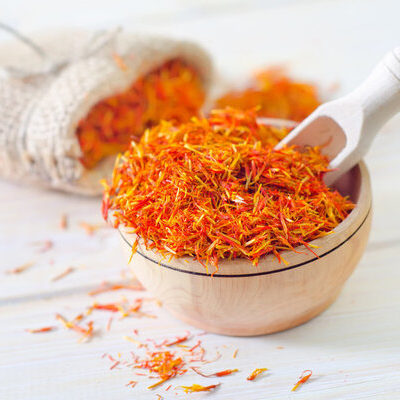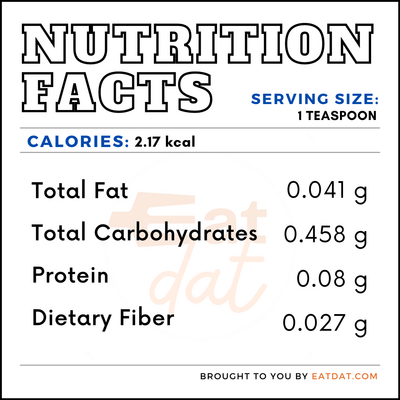
Saffron
What is Saffron?
Saffron is a spice derived from the flower of the crocus sativus and is dried for use as a seasoning and coloring agent. It is one of the most expensive spices in the world. This spice comes in the form of threads that are dark-orange in color.
- They have a bitter taste, which blends well into a unique earthy aroma and taste in different dishes.
- It is a key ingredient in some iconic dishes from Indian, Pakistani, Iranian, Spanish, French, Moroccan, Afghan, and Greek cuisines.
The top 10 most popular brands of this spice are:
- Zaran Saffron
- Golden Saffron
- Vanilla Bean Kings
- Mehr Saffron
- The Gathering of Saffron
- Slofoodgroup
- Delitaliana
- Zaraffe
- Mazaeus Saffron
- La Mancha Prime
Origin of saffron
Saffron most likely originated in Bronze Age Greece. It was used in cosmetics, dyes, and medicines, as well as food. This spice has been the subject of poetry in the ancient civilizations of Greece, Rome, Iran, and India. The Egyptians, Romans, Arabs, Europeans, and Asians all traded this spice and eventually the Safranschou Code was established in Europe to deal with the adultery of the spice. Later on, it spread to the Americas through colonization and immigration. Throughout its history, this spice has led to several wars because of its high value.
Nutrition
The nutritional profile for 1 teaspoon of saffron is:

In addition, this spice also contains essential micronutrients such as calcium, magnesium, phosphorus, potassium, sodium, manganese, vitamin A, vitamin C, and folate.
Also, saffron has anti-inflammatory, anti-atherosclerotic, antigenotoxic and cytotoxic activities. Furthermore, it has been found effective in treating depression and neurodegenerative diseases such as Alzheimer’s Disease and Parkinson’s Disease. Additionally, it may help in controlling obesity and reduce the risk of hyperlipidemia, diabetes, cardiovascular diseases, and cancer. Plus, this spice is beneficial for people suffering from gastrointestinal diseases such as gastritis, peptic ulcer, irritable bowel syndrome, and hepatitis. However, excess consumption may lead to mild headaches, anxiety, and nausea in some people.
Commercial production
This spice cannot be cultivated in the wild because its seeds are sterile and cannot undergo natural pollination and reproduce through vegetative propagation. Still, the plant grows well in dry, warm weather and in clay soils. The flowers must be harvested by hand due to their delicateness. However, this must be done before sunrise so as not to damage them in the sunshine and heat. Producing this spice is a labor and time intensive process, which drives up its price.
Iran is the world’s largest producer and accounts for 88 percent of the global production. Other countries that produce this spice are India, Greece, Afghanistan, Morocco, Spain, Italy, and China.
The threads of this spice must be stored in an airtight container in a place that is cool, dry, and dark without exposure to direct sunlight. They must never be pre-ground because they lose their aroma and flavor quickly. However, water made using this spice can be stored in the fridge for three weeks.
Saffron recipes
This spice contains essential chemical elements such as crocin, pitocin, and safranal, which together blend well with any dish to provide a delightful result. It is also known for its use in iconic rice dishes, such as paella and risotto. Here are a few popular recipes:
- Saffron Rice
- Persian Chicken
- Sholeh Zard
- Persian Almond Cake
- Persian Rice with Potato Tahdig
- Zulbia
- Chicken Curry
- Kesar Phirni
- Badam Milk
- Ryzogalo
- Vegetable Couscous with Spiced Halibut
- Chicken Tagine
- Fassuliah K’dra
- Saffron Cake
FDA regulations
The FDA classifies saffron as a spice and coloring and defines it as the dried stigma of Crocus sativus L. Additionally, a spice is defined as any aromatic vegetable substance in whole, broken, or ground form, whose function in food is seasoning rather than nutritional. It may be used safely for the coloring of foods.
References
Madhura Rao, Saffron | How It’s Grown, Food Unfolded, https://www.foodunfolded.com/article/saffron-how-its-grown
April Fulton, The Secret History of the World’s Priciest Spice, National Geographic, https://www.nationalgeographic.com/culture/article/history-origin-of-saffron-spice-iran
Khazdair, Mohammad Reza et al. “The effects of Crocus sativus and its constituents on nervous system: A review.” Avicenna journal of phytomedicine vol. 5,5 (2015): 376-91., https://www.ncbi.nlm.nih.gov/pmc/articles/PMC4599112/
Mashmoul, Maryam et al. “Saffron: A Natural Potent Antioxidant as a Promising Anti-Obesity Drug.” Antioxidants (Basel, Switzerland) vol. 2,4 293-308. 29 Oct. 2013, doi:10.3390/antiox2040293, https://www.ncbi.nlm.nih.gov/pmc/articles/PMC4665515/
Ashktorab, Hassan et al. “Saffron: The Golden Spice with Therapeutic Properties on Digestive Diseases.” Nutrients vol. 11,5 943. 26 Apr. 2019, doi:10.3390/nu11050943, https://www.ncbi.nlm.nih.gov/pmc/articles/PMC6567082/
